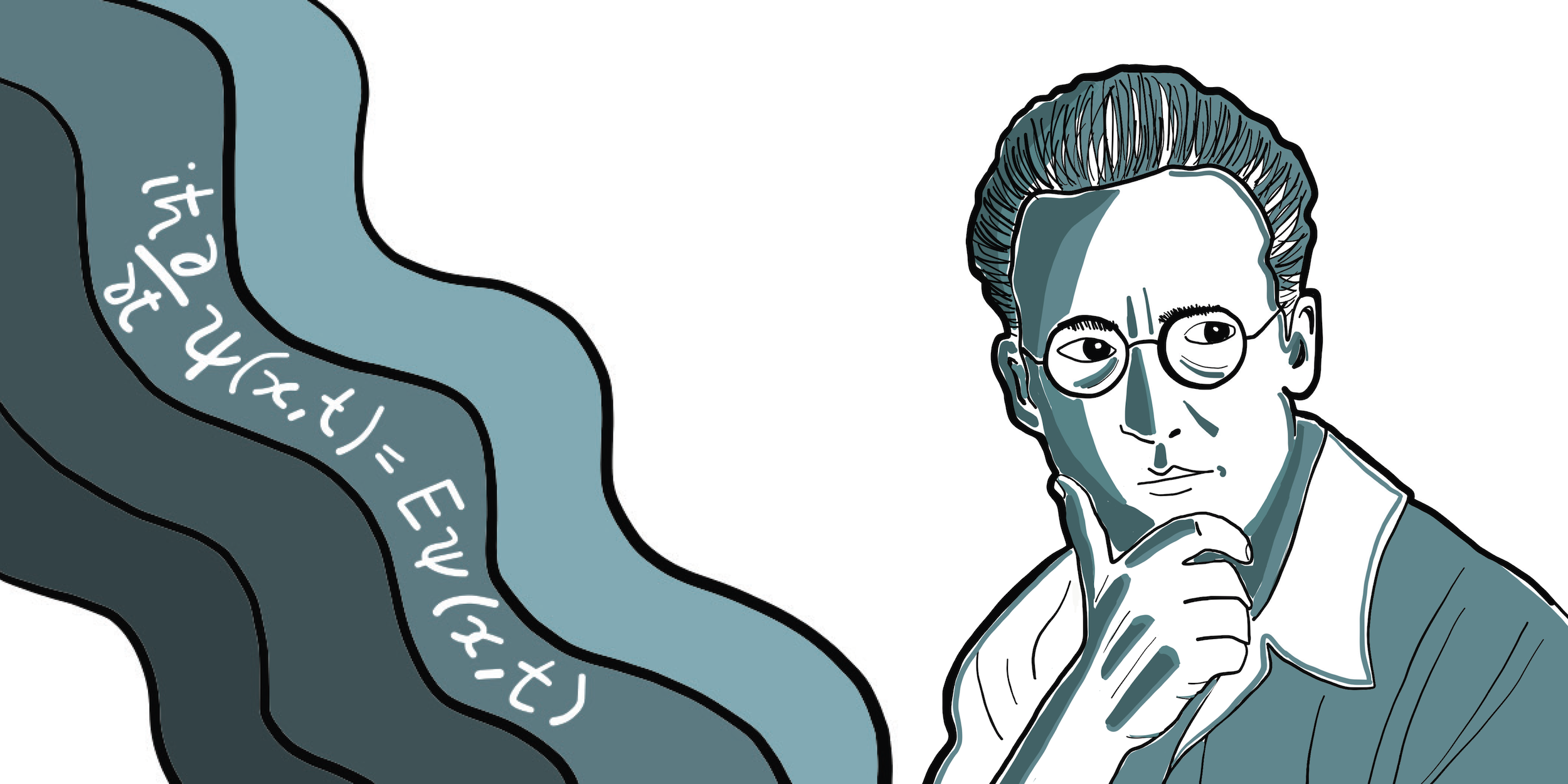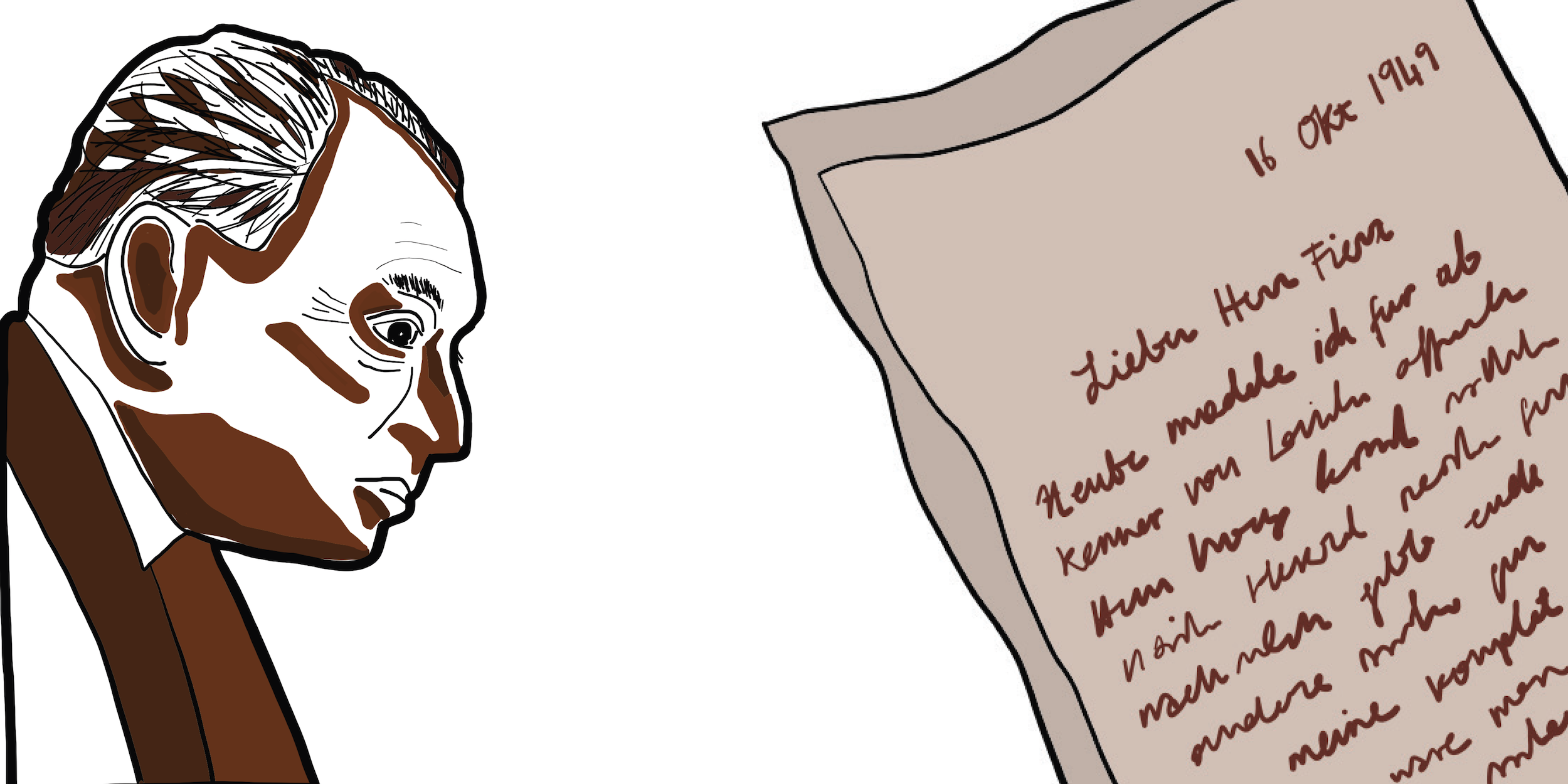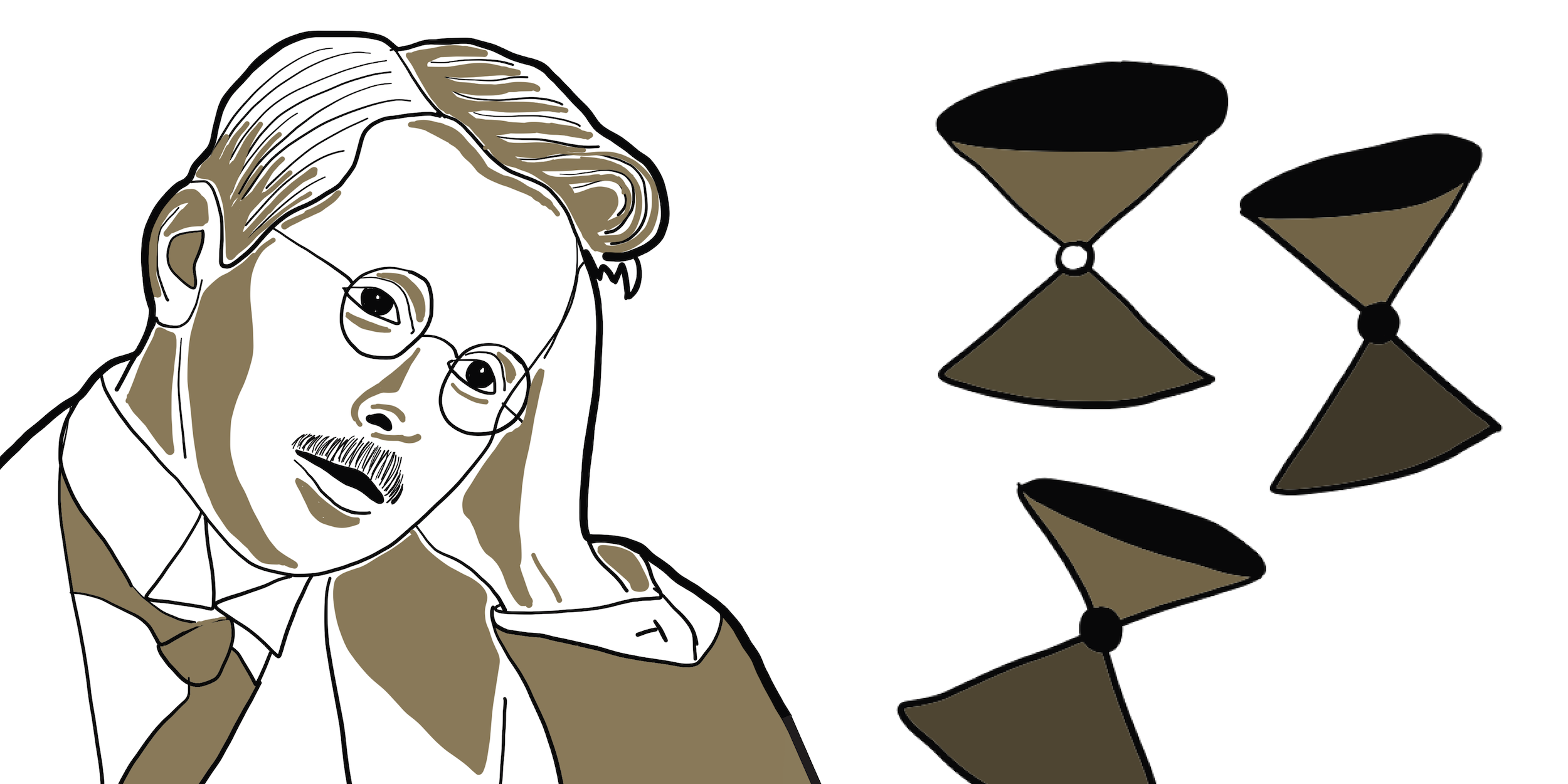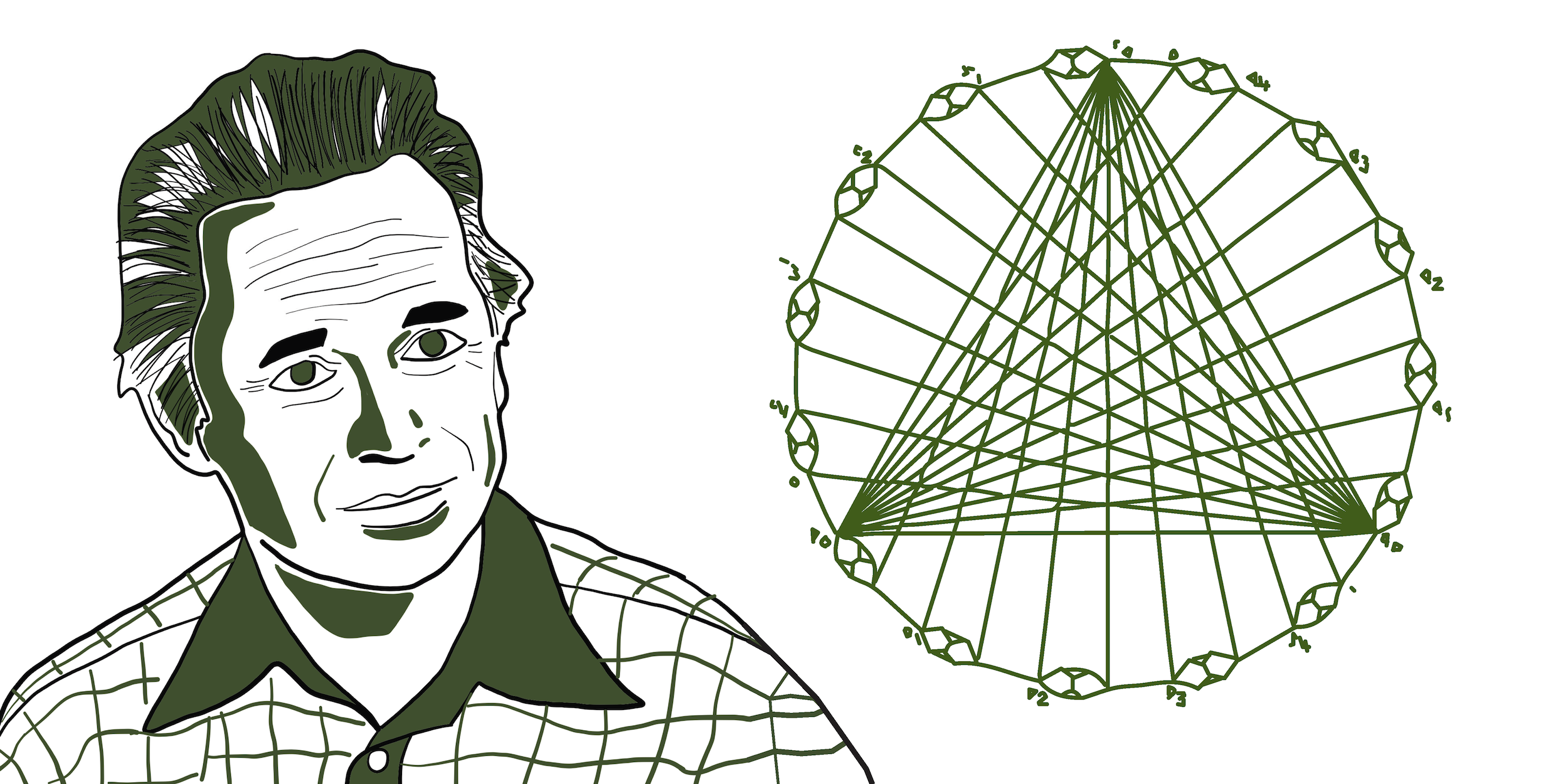Quantum Mechanics in Zurich
Zurich has a prominent place in the history of quantum science. We profile a few of the protagonists who shaped the field over the past century — with many more stories yet to be told.
The United Nations General Assembly has declared 2025 to be the external page International Year of Quantum Science and Technology, to mark the centenary of the initial development of quantum mechanics. In the first quarter of the 20th century, quantum physics revolved largely around explaining individual physical phenomena. The year 1925 marked a turning point, when quantum physics gained powerful mathematical frameworks that enabled predictions and deeper mechanistic understanding. At the University of Göttingen, Werner Heisenberg, Max Born and Pascual Jordan developed what would become known as the matrix-mechanics formulation of quantum mechanics, with independent contributions from Paul Dirac. Meanwhile, in Zurich, our first protagonist had his own revolutionary ideas.
Erwin Schrödinger (1887–1961)

Erwin Schrödinger’s time in Zurich is the material of legends. In 1921, the Austrian physicist came to Zurich from Wrocław to become professor of theoretical physics at the University of Zurich. The post had previously been held by several pioneers in the nascent field of quantum science — most notably Albert Einstein, Peter Debye and Max von Laue — but had been vacant since 1914.
Schrödinger arrived with a reputation as a versatile scientist. But at the age of 34, he was still without a stand-out work to his name. That was about to change. He settled well in Zurich and quickly developed a close-knit network that included his predecessor Debye (by then a professor of physics at ETH Zurich) and Hermann Weyl, a professor of higher mathematics at ETH. And the connections went well beyond science. There are numerous accounts of the love affair between Weyl and Schrödinger’s wife Annie, while Schrödinger himself — in the words of his biographer Walter Moore [1] — found in Weyl and Debye “competent guides to the uninhibited night life of the city”.
The spark for Schrödinger’s scientific labour of love, however, was the doctoral thesis of a young Frenchman. Louis de Broglie had postulated that not only light but also matter possessed a wave nature. Building on this intriguing idea, Schrödinger developed within a few months the equation that would bear his name. The breakthrough came during the 1925/1926 holiday season, which Schrödinger spent in Arosa. He had visited the alpine resort several times since 1922, when he first went there to recover from a mild case of pulmonary tuberculosis [2]. This time around, the setting was more cheerful. Accompanied by a mysterious ‘lady friend’, he worked intensively on exploring de Broglie’s concept. Soon he knew that he was on to something major: “Just now a new atomic theory is niggling me. If only I knew more mathematics! I am very optimistic about this thing and hope that if only I can master the calculations, it will be very fine. I think I can provide a vibrational system [ein schwingendes System] in comparatively natural ways, not through ad hoc assumptions,” he wrote to his colleague Wilhelm Wien on 27 December 1925 [3]. By 26 January 1926 he was ready to submit the first of a series of papers to the Annalen der Physik, and three more followed by June [2].
Schrödinger had his stand-out work. He was a star when he left Zurich in 1927 to become Max Planck’s successor in Berlin. In 1933, one year after Heisenberg, he was awarded the Nobel Prize in Physics, shared with Dirac, “for the discovery of new productive forms of atomic theory”.
Wolfgang Pauli (1900–1958)

Schrödinger was not the only one to struggle to understand quantum physics. Wolfgang Pauli famously wrote in 1925, as a young professor in Hamburg: “At the moment physics is again terribly confused. In any case, it is too difficult for me, and I wish I had been a movie comedian or something of the sort and had never heard of physics.” Fortunately for physics, Pauli didn’t change his career path. In early 1928, he came to ETH Zurich, where he succeeded Debye as professor of theoretical physics, becoming the ‘position grandson’ of Einstein, as the latter put it [5], Einstein having been the first to hold that position at ETH.
Pauli did not disappoint. In 1930 he postulated the existence of a new particle, the neutrino, which further cemented his reputation as an outstanding theorist. But soon a dark chapter was to begin, with the rise of fascism in Germany. Pauli, who had Jewish ancestors, desperately sought naturalization in Switzerland, but was refused. The relationship with ETH Zurich remained strained during this period, which included a six-year stay in Princeton [6, 7]. Relations only began to thaw in late 1945, when Pauli was awarded the Nobel Prize in Physics, for his discovery of the exclusion principle — or, the Pauli principle — which he had made during his time in Hamburg, before moving to Zurich. In 1949 he finally became a Swiss citizen and remained at ETH until his untimely death in 1958.
While the work on the principle that bears his name predates Pauli’s time in Zurich, he continued to work out its profound consequences [5]. Equally important, if not more so, was his role in hosting, fostering and collaborating with whole generations of quantum physicists at ETH. One of them even beat Pauli to the Nobel Prize: Isidor Rabi, with whom Pauli had already worked in Hamburg, came to ETH as a visitor in 1929 [8]. In 1944 Rabi received the prize for his work on nuclear magnetic resonance (NMR) in beam experiments. In 1952, the Nobel committee again recognized work on NMR, this time in condensed matter. One of the laureates was Felix Bloch, one of Pauli’s first assistants in Zurich [9]. Lew Landau (Nobel Prize in Physics 1962) also stayed in Pauli’s group, for two short visits in 1929 and 1930/31 [10]. Post-war visitors included a young Roy Glauber, who would later help lay the foundations for the field of quantum optics, for which he received one half of the 2005 Nobel Prize in Physics. In 1950, Glauber spent half a year in Pauli’s group [11], during which time he took the now-famous photograph of Pauli kicking a football directly at him (see [12]).
Pauli’s lively interactions with such a remarkable fellowship of physicists over many decades meant that he left behind a substantial archive. This is now located at CERN and at ETH [13] and remains a treasure trove of insights and gems relating to early quantum physics, among many other topics.
Hermann Weyl (1885–1955)

“In my work, I have always tried to unite the true with the beautiful; when I had to decide for one of them, I have always chosen what was beautiful.” This quote adorns the wall of a niche in the ‘Hermann Weyl room’ in the main building of ETH Zurich, behind a sculpture of the German mathematician, physicist and philosopher. Weyl was a professor at ETH from 1913 to 1930, and as we have seen above, a close companion of the Schrödingers during their time in Zurich.
And if a thing of beauty is a joy for ever [14], then this is certainly true for one extraordinary brainchild that Weyl produced during his time as an ETH professor, albeit while spending the academic year 1928–1929 in Princeton: a relativistic wave equation that describes massless spin-1/2 particles [15]. Intriguingly, these hypothetical particles — now known as Weyl fermions — would be able to carry electric charge while being massless, making them unique among fermions. Unfortunately, however, no such particle was found during Weyl’s lifetime. Also, the hope that Weyl’s equation might describe the neutrinos postulated by Pauli (and later detected in experiments) was dashed when neutrinos were found to have mass. In fact, Weyl is said to have distanced himself from his own predictions, mainly because they implied the violation of parity symmetry, which scientists of his era believed to be universally preserved.
But big ideas often take time to come to full fruition. It was only in the past decade, more than 85 years after Weyl’s predictions, that his fermions were first observed. They did not appear in the traditional context of particle physics though, but as so-called quasiparticles in condensed-matter systems; that is, in natural and engineered solids. Several ETH groups have made substantial contributions to the resurgence of Weyl fermions (for instance [16–18]), exploring Weyl’s concepts in contexts that might have technological implications. The topic is now at the forefront of modern condensed-matter physics and materials science.
While long considered a captivating but abstract concept, Weyl’s equations turned out to be a stunning union of the true and the beautiful — adding to Weyl’s many contributions to gauge theory and symmetry principles.
Ernst Specker (1920–2011)

Weyl’s groundbreaking work was not the only one that would take decades to truly unfold and reveal its deep significance. In a landmark paper published in 1967 [19], Ernst Specker, professor of mathematical logic at ETH Zurich, and his colleague Simon Kochen of Cornell University formulated a theorem that provides deep insight into the foundations of quantum mechanics. Importantly, also thanks to subsequent work by John Bell and others, the Kochen–Specker theorem can be tested experimentally — with important implications for modern quantum information science.
Specker’s entire career was closely linked to ETH. It was here that he studied mathematics from 1940 to 1945 and where he received his doctorate in 1948. After two years in Princeton, he returned to Switzerland and in 1955 became professor at ETH, until his retirement in 1987. He remained an active presence in the Department of Mathematics until his death in 2011. His work is remarkably broad, covering various topics across mathematics. As if that were not enough, Specker also preached at the Predigerkirche in Zurich, from 1993 to 1995. A volume of 35 short lay sermons was published in 2008 [20].
His most famous publication, however, was the one with Kochen. Their theorem challenges the intuitive feature of classical physics that any measurement has a value that is independent of other ‘compatible’ measurements that are performed at the same time. Kochen, Specker and Bell proved that such ‘non-contextuality’ is in conflict with quantum mechanics, thereby making certain types of so-called hidden-variable quantum theories impossible.
The theorem was the product of a collaboration that began in 1961, when Specker first met Kochen at Cornell. But despite the impact of the work, for Specker it remained “in a category of its own”, as he wrote in a 1990 autobiography, which he published under a pseudonym [21]. There he also revealed — writing in third person — that “[e]ven to-day, when he is asked to lecture on their results […] he makes sure that he is not supposed to discuss alternative approaches, adding: ‘Don't ask an orthodox to expose heterodox views!’”
The technologies that enabled putting the Kochen–Specker theorem to experimental tests only became available in the early 2000s, and work in this field continues to this day. These developments did not escape the attention of the theorem’s authors. Kochen recalls that in his last meeting with Specker — not long before his passing — Specker “was particularly happy to hear that the experiment that we had described in our first paper a half century ago had been recently carried out, and confirmed our predictions” [22].
Text: Andreas Trabesinger / Illustration: Chiara Decaroli
References
1. Moore, W. Schrödinger: Life and Thought. Cambridge University Press (2015).
2. Gull, T. Der Wellenrechner: Erwin Schrödinger. In: Einstein und Co. — Nobelpreisträger in Zürich (Wyder, M., ed.), NZZ Libro (2015).
4. external page https://cds.cern.ch/record/84651
5. Plüss, M. «Ich fand in Zürich keineswegs ein Alpendorf»: Wolfgang Pauli. In: Einstein und Co. — Nobelpreisträger in Zürich (Wyder, M., ed.), NZZ Libro (2015).
8. Wyder, M. Frischer Wind in Europa: Isidor I. Rabi. In: Einstein und Co. — Nobelpreisträger in Zürich (Wyder, M., ed.), NZZ Libro (2015).
9. Trabesinger, A. Der wahre Zürcher Nobelpreisträger: Felix Bloch. In: Einstein und Co. — Nobelpreisträger in Zürich (Wyder, M., ed.), NZZ Libro (2015).
10. Trabesinger, A. Der geniale Revolutionär: Lew Landau. In: Einstein und Co. — Nobelpreisträger in Zürich (Wyder, M., ed.), NZZ Libro (2015).
11. Trabesinger, A. In Paulis Schusslinie: Roy J. Glauber. In: Einstein und Co. — Nobelpreisträger in Zürich (Wyder, M., ed.), NZZ Libro (2015).
12. Glauber, R. A remembrance of Pauli in 1950. Physics Today 54, 49 (2001). external page DOI: 10.1063/1.1359710
14. Keats, J. Endymion. Taylor and Hessey (1818).
15. Weyl, H. Elektron und Gravitation. Zeitschrift für Physik 56, 330 (1929). external page DOI: 10.1007/BF01339504
16. Lv, B. et al. Observation of Weyl nodes in TaAs. Nature Physics 11, 724 (2015). external page DOI: doi.org/10.1038/nphys3426
17. Soluyanov, A. et al. Type-II Weyl semimetals. Nature 527, 495 (2015). external page DOI: 10.1038/nature15768
18. Peri, V. et al. Axial-field-induced chiral channels in an acoustic Weyl system. Nature Physics 15, 357 (2019). external page DOI: 10.1038/s41567-019-0415-x
19. Kochen, S. & Specker, E. P. The problem of hidden variables in quantum mechanics. Journal of Mathematics and Mechanics 17, 59 (1967). external page DOI: 10.1007/978-94-010-1795-4_17
20. Specker, E. Wie ein Dieb in der Nacht. Theologischer Verlag Zürich (2008).
21. Meon, J. The story of a friend. In: Ernst Specker Selecta, Birkhäuser (1990).
22. Engeler, E., Hungerbühler, H. & Makowsky J. A. Remembering Ernst Specker (1920-2011). Elemente der Mathematik 67, 1 (2012). Link